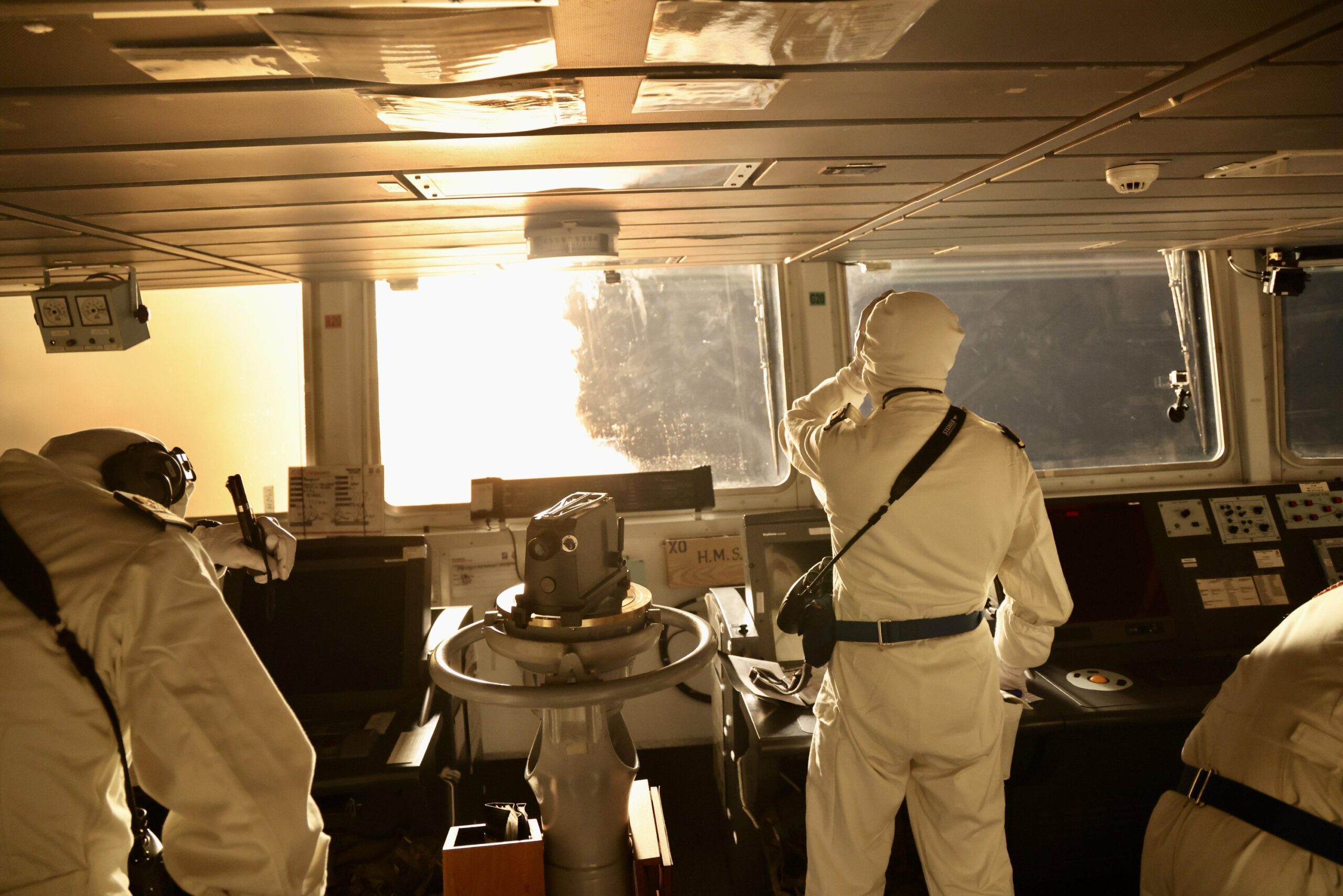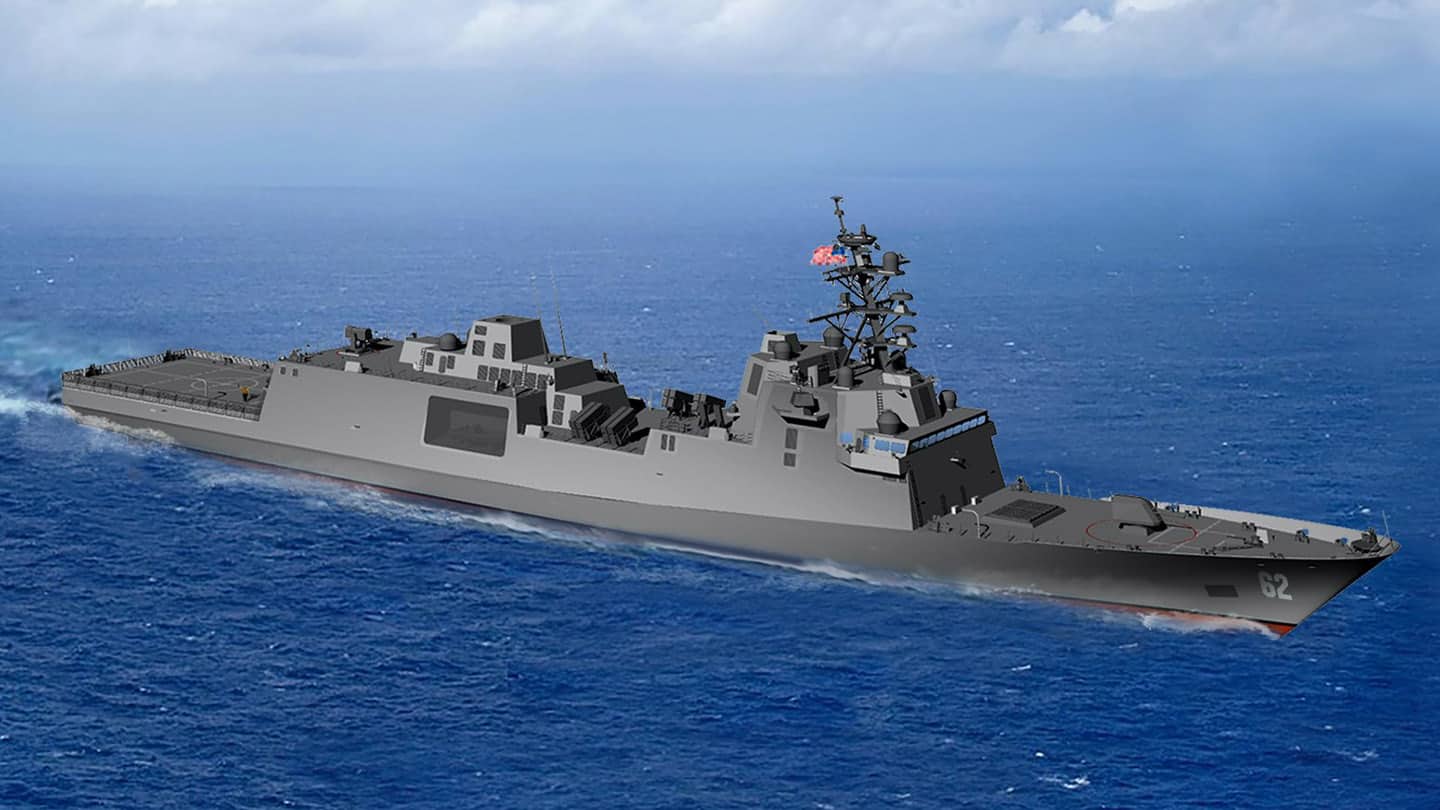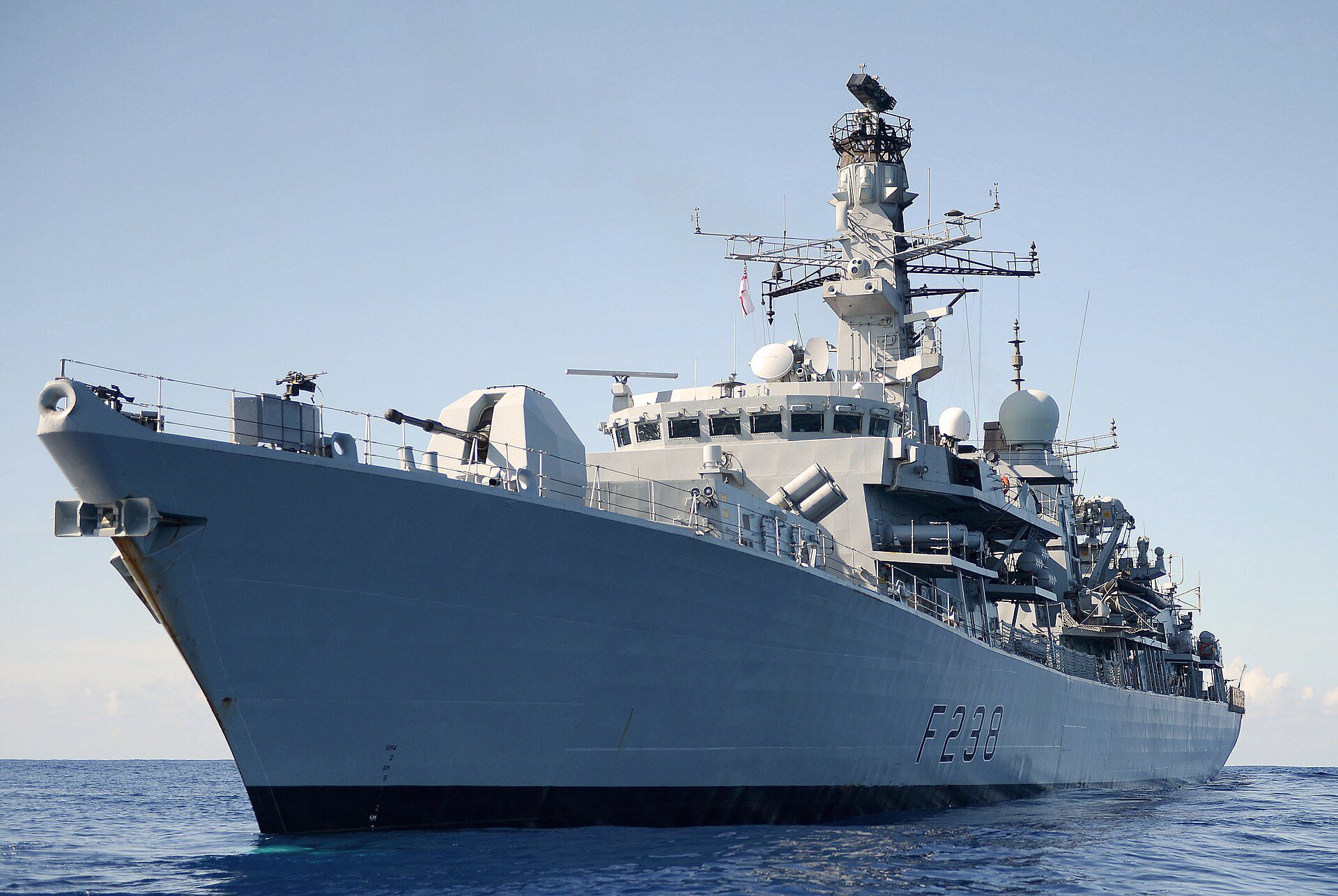by Captain John Konrad (gCaptain) When it comes to Army combat, few commands harden a soldier like “fix bayonets”. However, in merchant convoy operations at sea, the equivalent command is “attention all ships, full speed ahead”. Just yesterday, a UK Royal Navy officer issued this command over the VHF radio to all ships in the vicinity of the Bab el-Mandeb Strait.
That command followed the launch of a swarm of drones and a barrage of anti-ship missiles in the Red Sea yesterday in what one Naval officer in the region explained to gCaptain as “Greyhound Day” and the US Central Command described as the most “complex attack” against shipping in the Red Sea to date, at least one warship – HMS Diamond – resorted to the use of its guns, a defensive tactic reminiscent of the Battle of the Atlantic.
Also Read: US Merchant Marine Sailors Were Target Of Houthi Attack
The U.S. Central Command confirmed details of multiple incidents in a post to “X” Tuesday night, stating that a combination of U.S. warships, fighter jets, and a UK warship shot down eighteen suicide drones and three missiles launched from Yemen towards international shipping lanes where “dozens” of ships were transiting.
“A complex attack tells me that we are looking at a coordinated swarm offensive or that there were a few close calls,” said maritime historian Dr. Sal Mercogliano. “One-way drones are propeller-driven missiles and the fact is that it took three Burkes and a type 45 destroyer represents the bulk of the naval forces on station.”
Fire When Ready
No damages to ships were reported, but the UK Royal Navy stated that the HMS Diamond successfully engaged and destroyed multiple attack drones using Sea Viper missiles and guns. So far, most of the attacks have been intercepted by vertically launched missiles with a range of over fifty nautical miles. United States destroyers like the USS Carney carry SM-2 anti-air missiles with a range nearly double that. Guns, on the other hand, are used in close combat situations.
It is unclear which ‘guns’ the HMS Diamond used to destroy these attack drones. However, the ship is equipped with a pair of Phalanx Close-In Weapon System (CWIS) guns and a 4.5-inch caliber deck gun. The CWIS is considered a weapon of last resort, with an effective range measured in yards, not miles. Destroyers typically maintain a distance of at least a mile from merchant ships, so the CWIS would only be useful if the warship was in the line of fire or targeted itself.
The traditional deck gun, typically mounted on the bow of warships, is primarily used for sinking ships or bombarding coastlines. However, modern deck guns can now be equipped with explosive rounds capable of shooting down drones, missiles, and aircraft. The Mark 8 naval deck gun on the HMS Diamond, for example, can fire 25 rounds per minute at a surface distance of approximately 14 nautical miles. However, its effective range will be shorter depending on the speed and altitude of an airborne target.
Were US Merchant Ships The Target?
It is impossible to know why the Houthis decided to launch this attack yesterday, but it coincided with the transit of four US-flagged merchant ships. These ships carry military equipment to bases overseas and are guaranteed protection by the US Navy. According to one US Merchant Marine officer, it was the most intense day at sea he had ever experienced.
Command And Control Problems
This officer was hesitant to provide details but mentioned that the most challenging aspect was communication. In the past, every US Merchant Ship had a licensed radio officer on board, from the introduction of shipboard radio to the implementation of computerized GMDSS radio systems in the early nineties. However, nowadays, merchant ships no longer have dedicated radio officers and instead rely on unencrypted AIS signals and short-range VHF voice communication for coordination and the US Navy closed its Military Amateur Radio service, as reported in the US Navy Institute article Navy-Marine Corps Team Needs Amateur Radio Operators. This presents a significant problem because both AIS data and VHF voice radio transmissions are unencrypted and are being monitored by the Houthis.
Another important detail that has emerged is that Operation Prosperity Guardian (OPG) warships utilized a picket, instead of a close escort. Picket ships are positioned at a distance from the convoy and serve as the first line of defense. Their primary role is early detection and warning, extending the convoy’s radar and sonar coverage to identify potential threats, such as enemy submarines, aircraft, or surface ships, well in advance of any immediate danger. This early detection system provided by the pickets gives the convoy valuable time to react and prepare defenses. On the other hand, close escorts – which are not being employed by OPG – remain in close proximity to the ships they are guarding, ready to engage any immediate threats that manage to bypass the picket line. This combination of distant early warning and immediate defense is vital for ensuring the security of naval convoys in potentially hostile waters but OPG is utilizing just picket defenses because it does not have enough warships in the region to do both.
Shipping Markets
It is currently too early to determine how the shipping market and supply chains will react to this news. However, it is known that ship owners have access to information that is not shared with the public or press. The shipping industry is small and tightly-knit, with information closely shared among a limited number of ship owners and agents.
What is clear is that the US military has repeatedly warned ship owners and officers against sharing information with journalists, Wall Street analysts, and supply chain experts. While journalists and supply chains may be under-reporting the issue, ship owners are sharing more alarming stories among themselves. This information asymmetry could lead to more ships avoiding the region, while freight forwarders, cargo brokers, and other professionals further down the supply chain may be unprepared for the full extent of the delays.
Also Read… Stavridis: Hit the Houthis And Iran Where It Counts
Downplay By White House And Pentagon
It’s also clear that both the National Security Council in the White House and the office of the Secretary of Defense in the Pentagon are downplaying the seriousness of the attacks, despite numerous warnings to the Houthi militants. This could be due to a breakdown in communication between the two entities, which became evident with the news this week that President Biden was unaware that Defense Secretary Lloyd Austin has prostate cancer and was hospitalized after surgery.
When asked by a reporter yesterday if the White House had decided to take action against the Houthis, US Secretary of State Antony Blinken reiterated a recent warning to the Houthis issued by a coalition countries.
The US Department of Transportation, which acts as a liaison between the military and commercial shipping industry, issues international security alerts to shipping, and oversees the US Merchant Marine, has been relatively silent despite appeals from maritime unions and Merchant Mariners for more protection. gCaptain has contacted U.S. Secretary of Transportation Pete Buttigieg regarding the news, reported by Reuters, that an American ship crewed by US Merchant Mariners was the primary target of yesterday’s attack.
Also read: U.S. Navy Reiterates ‘Defensive Presence’ in Red Sea After Warning by Mike Schuler
Greyhound Day comes after well-documented missteps by both the White House and Pentagon in forming an allied coalition – Operation Prosperity Guardian (OPG) – to protect ships. Several nations backed out of the coalition or refused US command leadership early on and those who have committed are sending just a trickle of light warships to the region. The bad news deepened for OPG today when the EU Naval Force said they will not pivot to Red Sea defense and will instead stay focused on rising piracy incidents and the protection of World Food Programme ships.
Where is the Army, USMC and Air Force?
The tensions not only exist between agencies but also within the Pentagon itself. While the US Navy’s fifth fleet, which includes destroyers like the USS Carney and the Eisenhower Carrier Strike Group, has been actively involved in the region, there has been limited news regarding participation from other branches of the military. This is unusual considering the services have all been pivoting to the maritime domain as they prepare for a possible war in the Pacific and because the US Air Force operates a drone base in nearby Djibouti, the US Marine Corps could man US ships, and the US Army, known for its powerful Patriot surface-to-air missile (SAM) system, is historically responsible for guarding maritime chokepoints. Sources inside the Pentagon inform me that none of the service chiefs on the Joint Chiefs of Staff are interested in protecting ships in an operation that is being micro-managed by the White House and is filled with political mines. It is likely, however, that the other services are working behind the scenes with the Navy and US Central Command to provide support capabilities to OPG.
Combat At Sea
What is most evident from this event is this isn’t a maritime security situation, it has evolved into naval combat. This is not our interpretation as journalists but is a definition confirmed by the recent awarding of – well deserved – navy combat medals to the crew of the USS Carney.
In conclusion, the recent events in the Bab el-Mandeb Strait, coined as “Greyhound Day”, mark a significant escalation in the complexity and intensity of maritime threats. The successful defense against an unprecedented swarm of drones and missiles highlights the prowess and readiness of naval forces like the HMS Diamond and US destroyers. However, these incidents also underline the evolving challenges in maritime security, particularly in communication and the strategic use of picket ships over close escorts. The impact on the shipping markets remains uncertain, but what is clear is the heightened sense of vigilance and the need for enhanced information sharing among naval forces and the shipping industry. This incident not only tested the mettle of naval defenses but also serves as a stark reminder of the ever-present threats in strategic waterways and the critical importance of safeguarding global maritime trade routes.

 Join The Club
Join The Club











